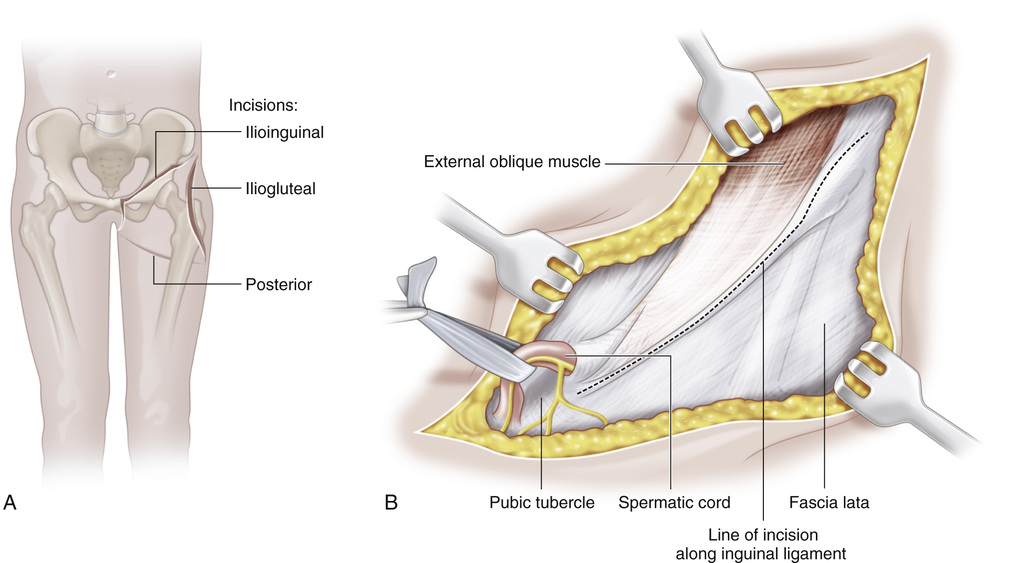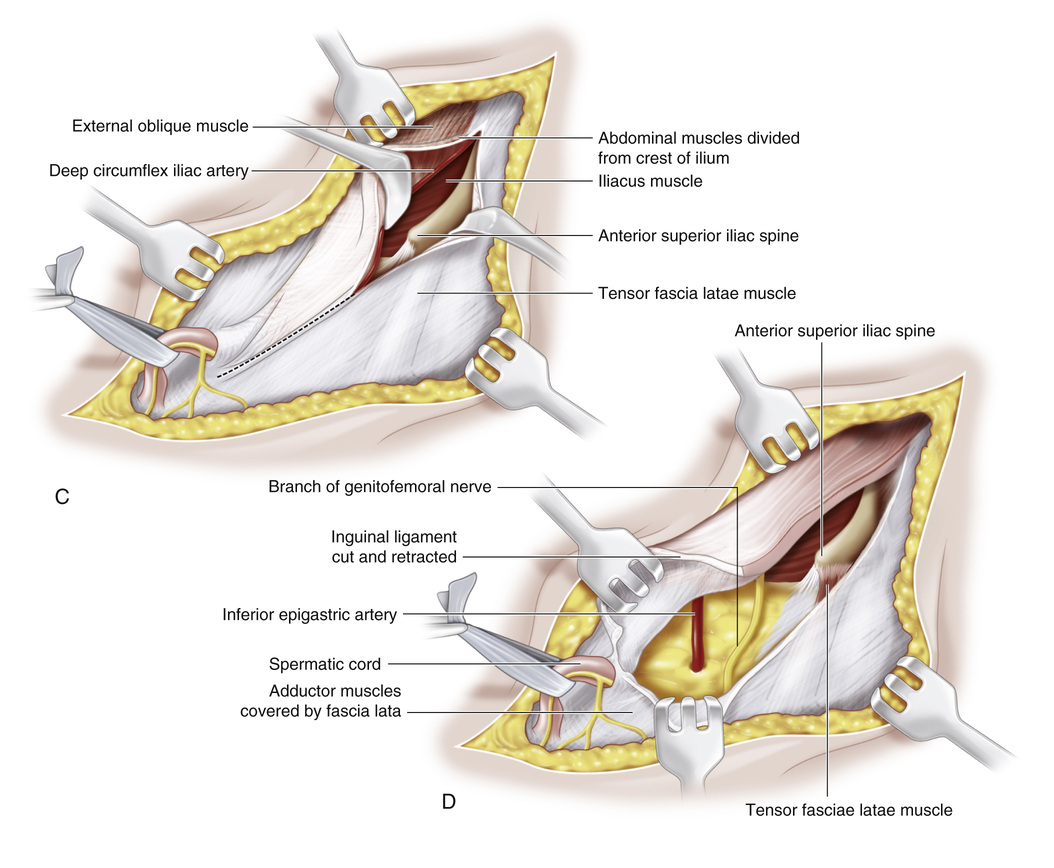Hemipelvectomy (Banks and Coleman Technique)
The patient lies on the unaffected side and is maintained in position with sandbags and kidney rests, which are placed well above the iliac crests. The normal limb underneath is flexed at the hip and knee and fastened to the table by wide adhesive straps. The uppermost arm is supported on a rest. The perineal area and, in the male, scrotum and penis, are shielded and held out of the operative field with sterile, self-adhering skin drapes. The operative area is prepared and draped so that the proximal thigh, inguinal and gluteal regions, and abdomen are sterile. It should be possible to turn the patient onto his or her back and side without contaminating the surgical field.
A, The outlines of the skin flaps, consisting of ilioinguinal, iliogluteal, and posterior incisions, are marked. With the patient placed on his or her back, the ilioinguinal incision is made first. It begins at the pubic tubercle and passes upward and backward parallel to Poupart ligament to the anterior superior iliac spine and then posteriorly on the iliac crest. Its posterior limit depends on the desired level of section of the innominate bone.
B, The subcutaneous tissue and fascia are divided along the line of the skin incision. The insertions of the abdominal muscles superiorly and the tensor fasciae latae and gluteus medius inferiorly are detached extraperiosteally from the iliac crest.
C, The abdominal muscles are detached from the iliac crest and medial wall of the ilium. The tributaries of the deep circumflex vessels are ligated.
D,
Stay updated, free articles. Join our Telegram channel

Full access? Get Clinical Tree








